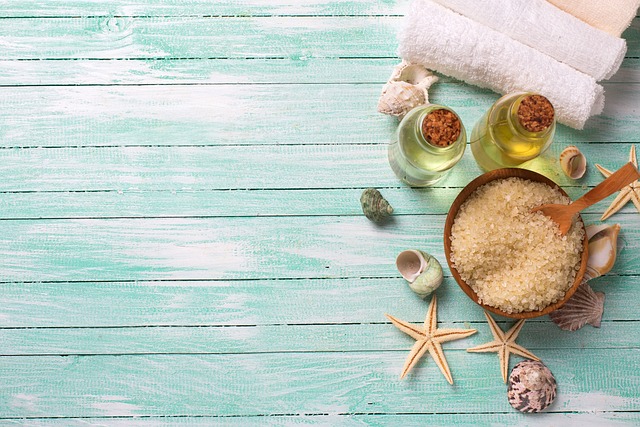Choosing Gentle Additives: Salts, Oils and Botanicals for Foot Baths
Foot baths are a simple way to support comfort and skin care for feet after long days, travel, or gentle self-care routines. Choosing salts, oils and botanicals with an eye toward skin sensitivity, sustainability, and practical use helps you craft a soak that suits personal needs. This article outlines gentle options, safety considerations, and how to integrate these choices with broader health and recovery practices.

Foot baths can be a nurturing ritual without being complicated. A gentle soak balances water temperature, mild additives and timing to avoid irritation while offering sensory comfort. For people seeking relaxation after airplane travel, recovery after exercise, or a momentary pause for anxiety, selecting additives that suit skin type and personal sensitivities matters. Keep in mind this article is for informational purposes only and should not be considered medical advice. Please consult a qualified healthcare professional for personalized guidance and treatment.
How do salts affect skin and comfort (healthcare context)?
Epsom salt (magnesium sulfate) and coarse sea salts are commonly used in foot baths for their texture and solubility. For many people, a small amount of finely ground salt can help soften callused skin and make grooming easier; for others, overly concentrated solutions can dry or irritate. If you have a medical device, an open wound, or are undergoing post-operative care such as abdominoplasty or any other medical procedure, check with a healthcare professional before soaking. For routine use, dissolve one to two tablespoons of a mild salt in warm—not hot—water and limit soaks to 10–15 minutes to minimize skin disruption.
Which oils are gentle and suitable for sensitive feet (anxiety, counseling)?
Carrier oils such as fractionated coconut oil, sweet almond oil, or grapeseed oil can lightly moisturize the skin after soaking. Aromatic essential oils can add a calming element—lavender and chamomile are frequently chosen for relaxation and to help reduce feelings of anxiety—but they are potent and should be used sparingly. If you work with a counselor or therapist and use foot soaks as part of a relaxation plan, consider a single drop of essential oil diluted in a carrier oil rather than adding it directly to the bath. Test for allergic reactions on a patch of skin before broader use.
What botanicals and botanically derived additives are practical (sustainability, online)?
Dried calendula, chamomile, and peppermint are common botanicals for foot soaks: they infuse water with mild scent and are generally well tolerated. Look for sustainably sourced botanicals if environmental impact is a concern, and consider buying from reputable online vendors that disclose origins and production practices. Create a simple muslin tea bag for botanicals to make cleanup easier and to avoid debris on skin. If you prefer portable solutions, pre-measured sachets or single-use pods are available, though they vary in sustainability and packaging materials.
Are there special considerations after travel or exercise (airplane, exercise, portable)?
Long airplane flights can contribute to transient swelling and discomfort in the feet. A warm foot soak at home can be part of a comfort routine after travel; keep the water temperature moderate and avoid prolonged immersion. After exercise, a cool-to-lukewarm soak combined with gentle stretching may help you feel better, but these practices are complementary to standard post-exercise care like hydration, rest, and appropriate muscle conditioning. Portable foot basins make it convenient to soak while traveling, but ensure panels or coatings on portable devices are intact and clean to prevent skin irritation.
What should people recovering from surgery or using medical technology know (post-operative care, medical device, spine)?
If you are recovering from surgery—whether an abdominoplasty, a procedure involving the spine, or another medical procedure—foot soaks should be discussed with the surgical team. Patients with implantable medical devices, compromised immune systems, or wounds should generally avoid immersive water therapies until cleared by a clinician. A clinician can advise on safe timing and modifications that fit post-operative care plans. Foot soaks are not a substitute for medical treatment but may be considered a comfort measure when medically appropriate.
How to choose additives with broader health and lifestyle in mind (sustainability, hair loss, teeth, vision)?
When selecting salts, oils, and botanicals, prefer products with transparent sourcing and minimal packaging if sustainability matters to you. Avoid products that make broad claims about affecting unrelated conditions—foot soaks do not treat hair loss, teeth health, or vision. If you consult online resources or have a video call with a healthcare or wellness professional about integrating foot soaks into a routine, bring notes about any skin conditions, medications, or allergies. Pairing gentle foot care with exercise, proper footwear, and counseling when needed gives a more comprehensive approach to well-being.
Conclusion Gentle foot soaks can be a pleasant part of a self-care routine when additives are chosen thoughtfully. Use mild salts in moderation, select carrier oils and botanicals for personal tolerances, and prioritize products with clear sourcing for sustainability. For those with medical conditions, recent procedures, or concerns about infection, consult a healthcare professional before beginning foot soaks. Thoughtful selection and modest use help keep the practice comfortable and safe.






